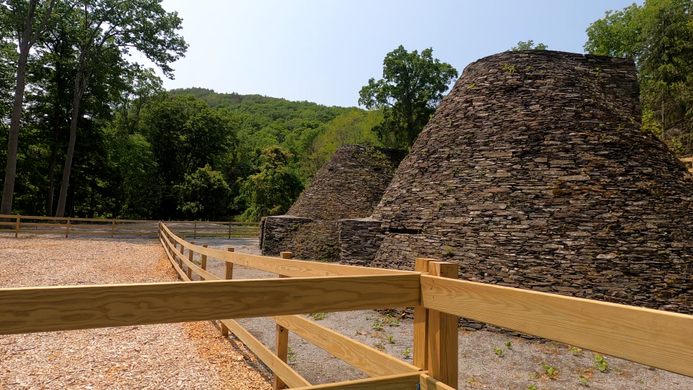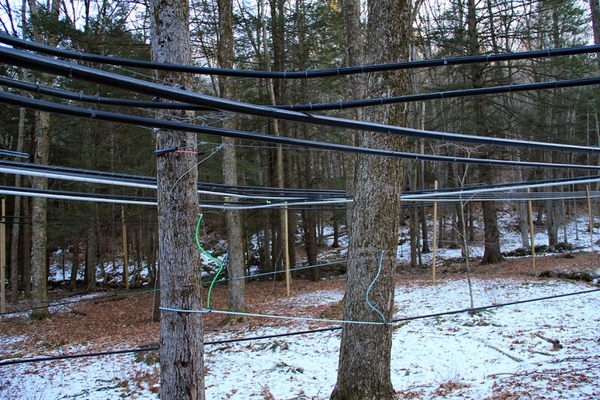AO Edited
Wassaic Beehive Charcoal Kilns
These conical kilns measure an impressive 30 feet in diameter, and were once used to produce charcoal for a local blast furnace.
Hidden by woods in the hamlet of Wassaic, New York, are two beehive-shaped structures that seem oddly out of place in rural Dutchess County. Their stone forms and corbelled interior domes resemble Mycenaean tholos tombs more than ruins of an industrial American past. These beehive kilns (also referred to as pits) are furnaces once used by Reed, Gridley, & Co. Iron Works to transform wood into charcoal. The charcoal, in turn, fueled a blast furnace used in iron ore production. The beehive charcoal furnaces, built during the 1820s, are the only structures still standing from the operation that once dominated the region.
The conical kilns were constructed using local stone and measure an impressive 30 feet in diameter, with a height of approximately 16 feet. The entry alone is six feet high, inviting the intrepid into the heart of the kilns. Looking up, the corbelled stonework forms what seems like an ancient rotunda, with an oculus-like opening at the apex and a rectangular opening partway up the dome. A stone wall behind the kilns works as a retaining wall. Scrambling up the level behind it, you can see the rear and tops of the furnaces from the heightened vantage.
Know Before You Go
The beehive kilns are not visible from the road. From New York State Route 22, the stone structures are located in the woods, to the left, near the start of Deep Hollow Road. You’ll see a historic marker on RT 22 to the right of Deep Hollow Road.
Despite the rural location, you can visit the beehive kilns using public transportation from New York City. From Grand Central, the Wassaic station is at the northern end of the Metro-North Harlem line, which runs through-trains during commuter hours (otherwise you’ll need to change at Southeast, NY for the Wassaic branch line). From the Wassaic station, walk (or bike) south on the Harlem Valley Rail Trail to the historic hamlet of Wassaic. When you get to the Wassaic Project (an artists’ cooperative), turn right onto Furnace Bank Road, continuing to the end (RT 22). Turning left and crossing 22, you’ll soon arrive at Deep Hollow Road and the charcoal furnaces. It’s about a half mile, or 15-minute walk, from the station.
Wassaic is at the southern end of the Harlem Valley Rail Trail (HVRT). At Copake Falls (at the northern end of the thus completed rail trail) 22 miles to the north, you can visit the remains of the Copake Iron Works and museum. Both the Wassaic Charcoal Kilns and Copake Iron Works are part of the Upper Housatonic Valley Iron Heritage Trail, which includes the remains of 18th and 19th century blast furnaces, forge sites, lime kilns, iron ore mines, and charcoal kilns in Dutchess and Columbia counties (NY), Litchfield County (CT), and Berkshire County (MA) ; a reminder that the landscape surrounding the Taconic range was not always gentrified or pastoral.





















Follow us on Twitter to get the latest on the world's hidden wonders.
Like us on Facebook to get the latest on the world's hidden wonders.
Follow us on Twitter Like us on Facebook